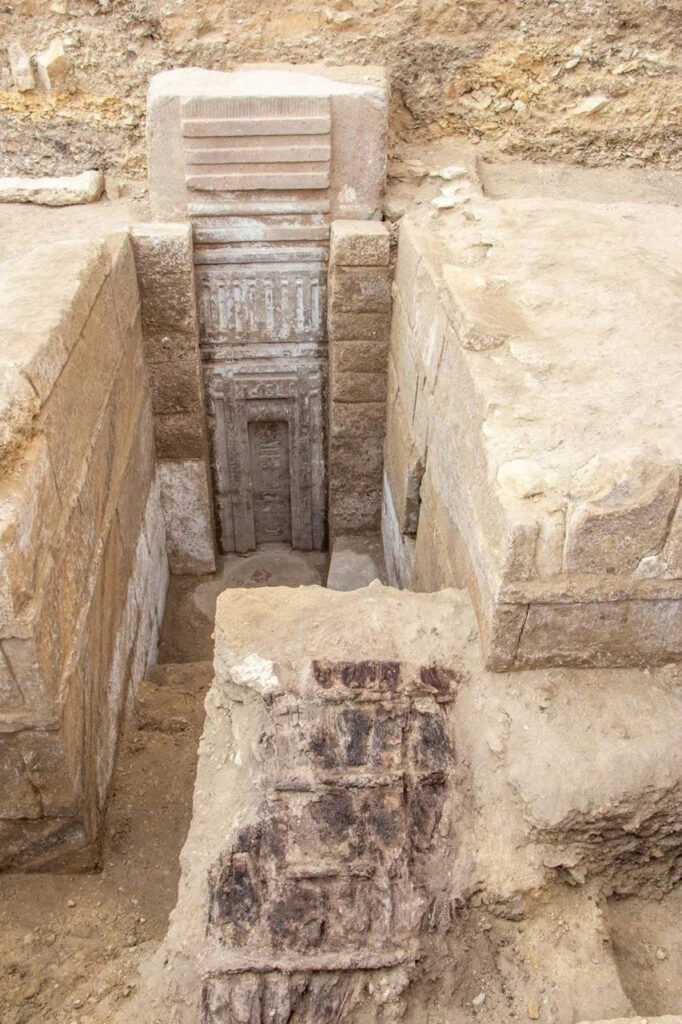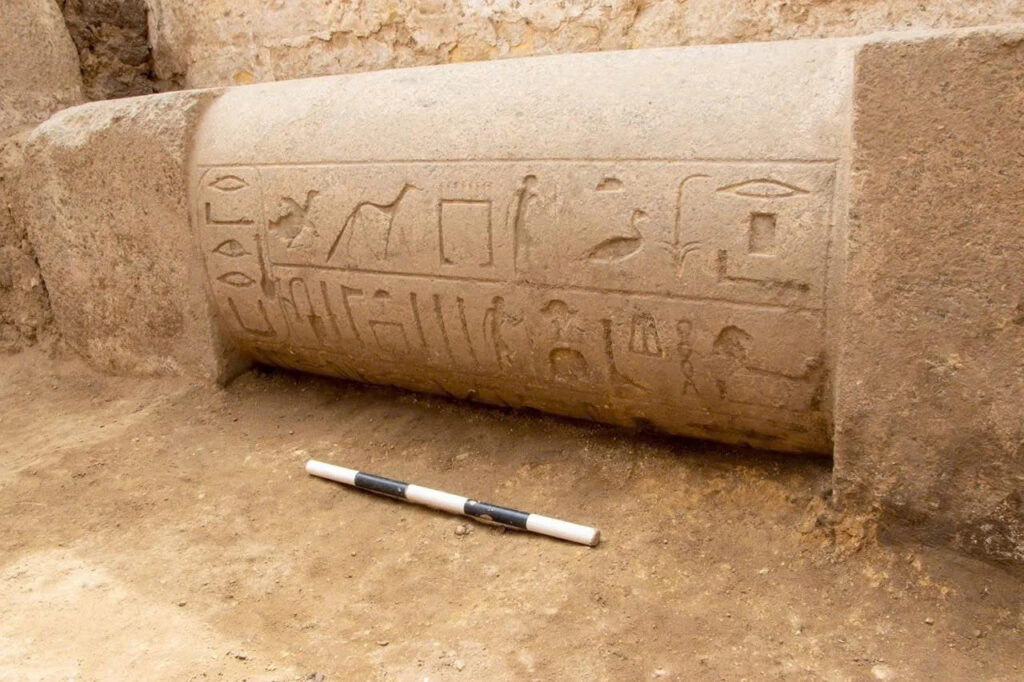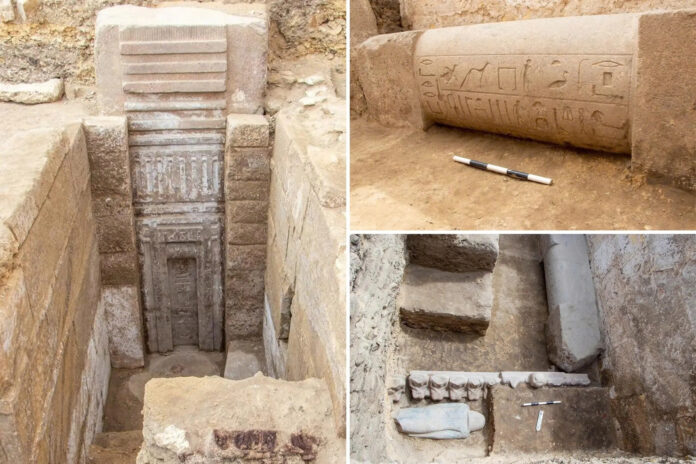A remarkable archaeological discovery has shed new light on ancient Egyptian royalty, as researchers have successfully excavated the burial site of Prince Waser-If-Re, son of King Userkaf who established Egypt’s Fifth Dynasty. Located within the historic Saqqara burial grounds near Cairo, this extraordinary find offers unprecedented insights into royal life from approximately 4,000 years ago.
The Archaeological Breakthrough
The excavation was spearheaded by renowned Egyptologist Dr. Zahi Hawass, working in collaboration with the Supreme Council of Antiquities and the Zahi Hawass Foundation for Archaeology and Heritage. Initial investigations confirmed the tomb’s origins in the Old Kingdom period, though subsequent research revealed fascinating evidence of reoccupation during Egypt’s 26th Dynasty.
The Magnificent Pink Granite Entrance

The tomb’s most spectacular feature is an enormous false door crafted from pink granite, measuring an impressive 4.5 meters in height and 1.15 meters in width. This architectural marvel represents the first discovery of its kind in Egypt, distinguished by both its unique material composition and extraordinary dimensions. Ancient hieroglyphic inscriptions adorning the door detail Prince Waser-If-Re’s numerous prestigious positions, including “Hereditary Prince,” “Royal Scribe,” “Vizier,” “Judge,” “Governor of Buto and Nekheb,” and “Chanting Priest.”
Evidence of Historical Reuse

Archaeological evidence points to the tomb’s continued significance long after its original construction. A secondary entrance carved into the tomb’s eastern wall displays both the prince’s name and a cartouche belonging to King Neferirkare, another Fifth Dynasty ruler. The presence of this additional entrance, combined with later-period artifacts discovered within, confirms that subsequent generations found value in repurposing this sacred space.
Extraordinary Artifacts and Statuary
The Royal Collection
Among the most captivating discoveries are thirteen pink granite sculptures depicting figures seated in high-backed chairs. Archaeological analysis suggests these may represent the prince’s wives, though several have been found without their heads. Nearby, excavators uncovered a toppled black granite figure standing 1.35 meters tall, alongside a red granite ceremonial table bearing inscribed ritual implements.
Video
Later Dynasty Additions

A substantial black granite statue, measuring 1.17 meters in height, was found within one of the tomb’s chambers. This piece, bearing the owner’s name and titles, dates to the 26th Dynasty, providing additional confirmation of the tomb’s reuse across different historical periods.
Ongoing Excavations and Future Discoveries

The archaeological team continues their methodical exploration, anticipating the discovery of additional chambers and artifacts. As work progresses, researchers hope to unravel remaining mysteries surrounding the tomb’s later occupancy and understand why royal statues were relocated to these underground chambers.
This significant find not only enriches our understanding of Fifth Dynasty royal practices but also demonstrates the enduring reverence ancient Egyptians held for their sacred burial sites across millennia.

